An Inside Look at “Garden of Green: Exquisite Jewelry from the Collection of Van Cleef & Arpels”
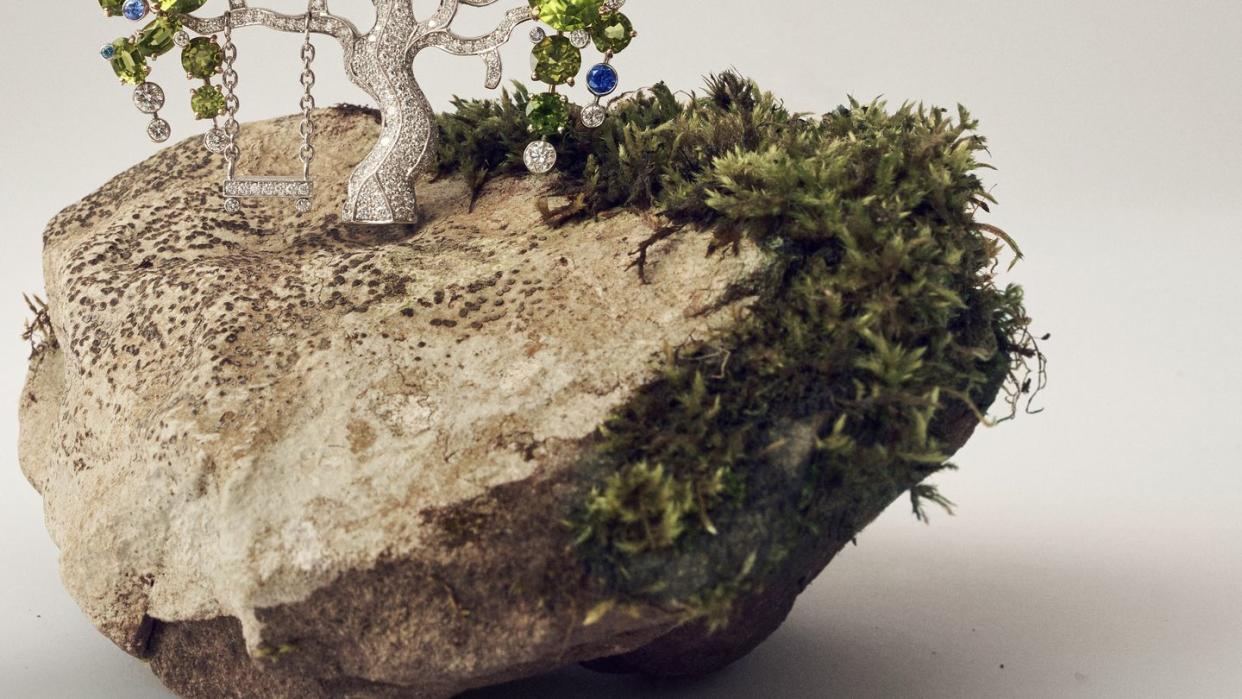
The dialogue between the earth and your brooch is the subject of a new exhibit at the Natural History Museum in New York City. Listen carefully.
Reverie clip
Peridots, mauve sapphires, and diamonds, from the Les Jardins collection, 2009 (Lead photo)
Iron and magnesium might not be the first things that come to mind when you see this Van Cleef & Arpels peridot, mauve sapphire, and diamond brooch, but you have them to thank for the privilege of looking at it. They are the dominant ingredients in its central stone, the ones that give it its signature verdant hue. This is the kind of thing you learn touring the new “Garden of Green: Exquisite Jewelry from the Collection of Van Cleef & Arpels” exhibit at New York’s American Museum of Natural History (through January). There, in the Melissa and Keith Meister Gallery, part of the Allison and Roberto Mignone Halls of Gems and Minerals, stories that begin deep in the earth and end with jewels sparkling on your lapel become central in explaining the beauty of each of the 44 Van Cleef & Arpels pieces on display, 32 for the first time in the United States. Process is what visitors are most impressed by in this hall: how stones are formed within the earth and rise to the surface, and are then cut and smoothed and faceted before being designed into jewels for personal adornment. That this has been continuing for eons is made loud and clear here, perhaps more than anywhere else in the world. All that in one intricately carved tree brooch.
Carpenteria brooch
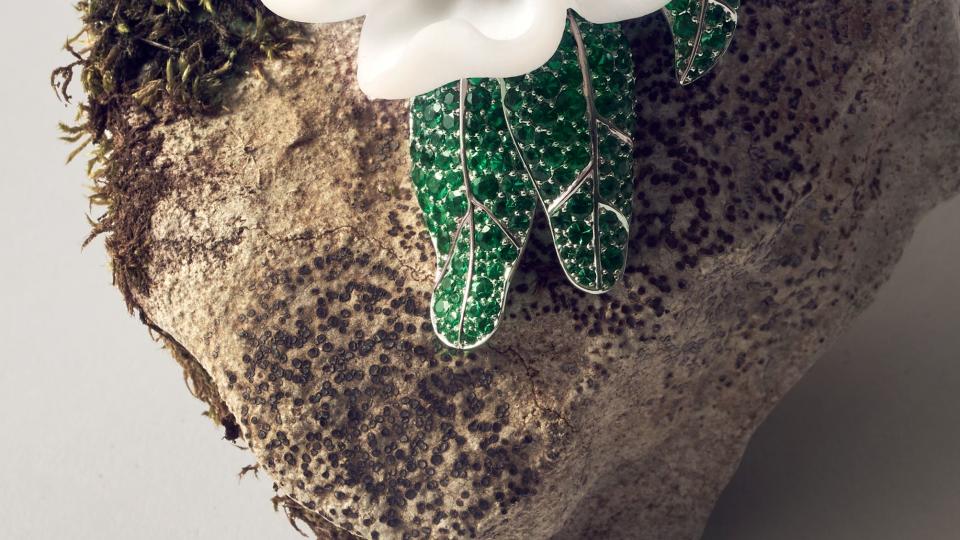
Though the wonders of nature dominate the gem and mineral halls—two massive amethyst-lined geodes greet you at the front door—the hunks of jade and shards of emerald only serve to illuminate the human ingenuity and artistry of the Van Cleef pieces in the exhibit. The reminder that these rough stones are the raw materials for a piece as intricate as the one above makes you look at each carved petal differently, makes you lean in a bit more closely against the glass and wonder, “How did they do that?” The design of the pieces feels that much more miraculous—that these fragments of the earth could, through creativity and craftsmanship, end up as an Art Deco lapel pin, that a hunk of green stone might continue its life as a part of yours.
Cydonia necklace
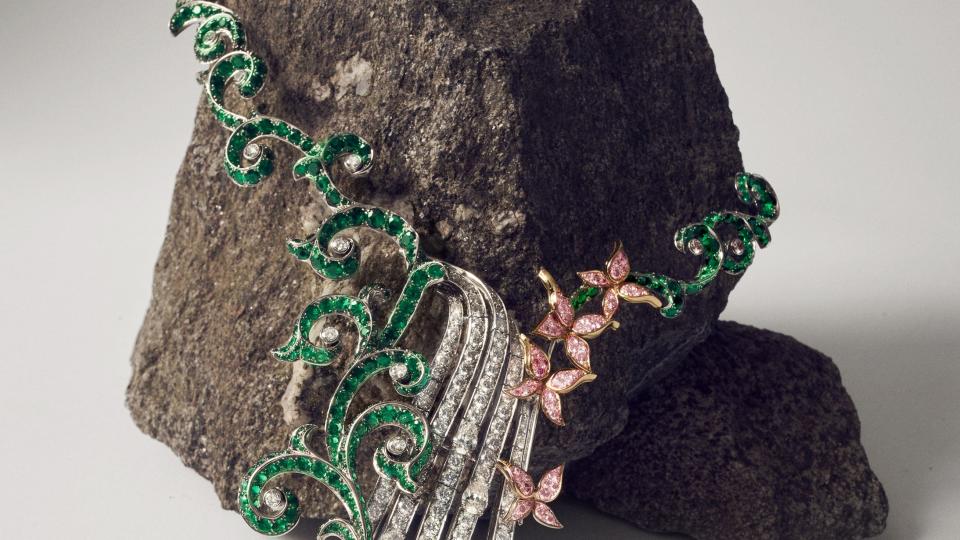
Outside the “Garden of Green” gallery, the Patricia Emerald, a 632-carat crystal that was discovered in 1920 in the Chivor Mine in Colombia, is on view. Inside is this Van Cleef & Arpels necklace named after the tree that bears quince. If the exhibit highlights the variety of green stones the house has used throughout its 117 years, it also illuminates the role nature has played in the company’s design history. There are flowers and tree branches and butterflies throughout, and in case you’ve forgotten, that iconic Van Cleef Alhambra is a good luck clover.
Ludo Secret watch
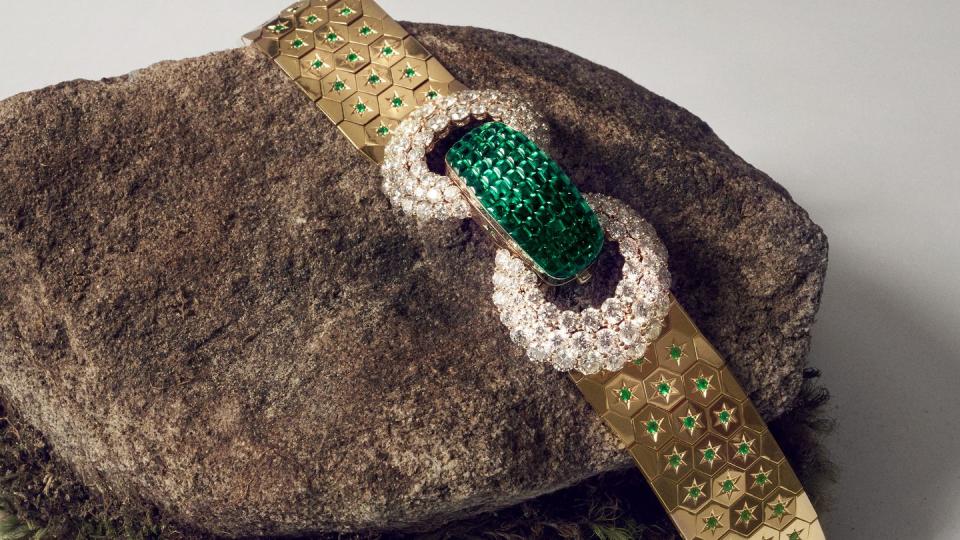
Bonus shot! You won’t see this new timepiece in the exhibition, but you should recognize it as a Van Cleef & Arpels after your visit. Continuity in craftsmanship and design language is core to the legend of Van Cleef, and it is unmistakable here. The house has been creating Secret watches, with hidden dials, since the 1920s—a signature note of whimsy that characterizes even Van Cleef’s most serious pieces. That wit, along with the technical wizardry seen in the carved malachite butterfly and the peridot-studded tree in the Museum of Natural History vitrines, is echoed here in a fusion of masterful watchmaking and jewelry design. And, yes, there are those emeralds, too.
Pongal Ring
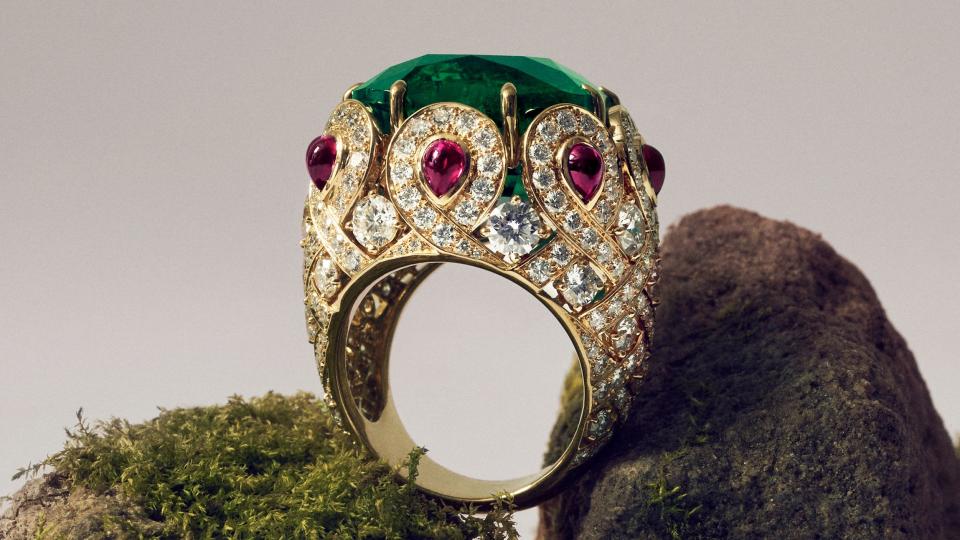
Every year since 2006 Van Cleef has presented a High Jewelry collection to showcase one-of-a-kind pieces. These events have become as well known for their highly crafted narratives as for the jewels themselves. There have been homages to California, French fairy tales, donkey skin, and, this year, the European tradition of the Grand Tour. In 2013 the story was all about the stones. A major plot point? This 27.81-carat emerald.
Saint Louis Clip and Butterfly Clip
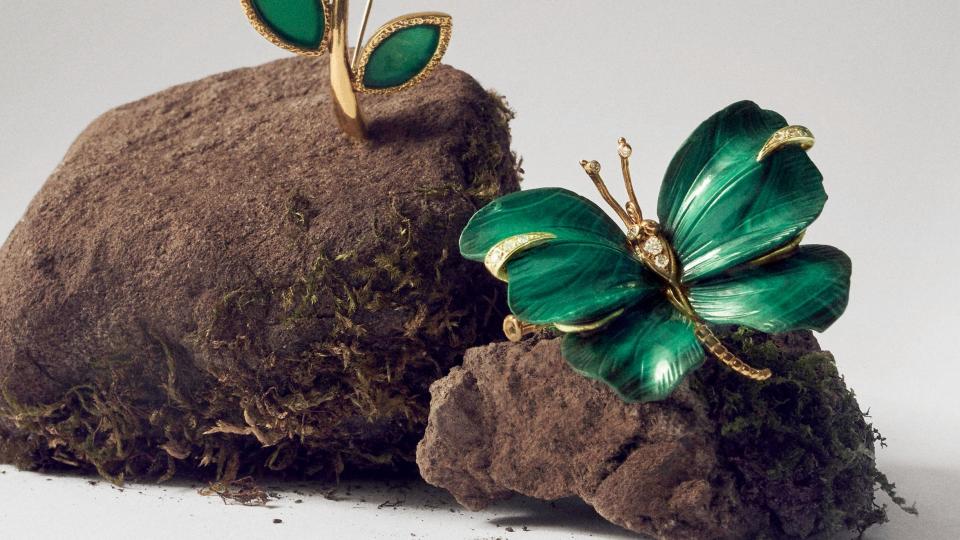
The vitrines in the American Museum of Natural History exhibit are labeled by stone. Some, like emerald and jade, are familiar to visitors. Others, like chrysoprase, green chalcedony, and malachite, are perhaps less so. But they have all been part of the Van Cleef palette. Stones like malachite and chalcedony were especially popular in the house’s 1970s designs (the trademark long gold pendants are often studded with them, and the highly collectible zodiac charms featured them as backgrounds). The vitrines also include plaques listing the stones’ origins and properties. So, yes, you can certainly go and stare at the carved Van Cleef emeralds on the pendant Prince Karim Aga Khan IV bought his wife in 1971 that converts into matching bracelets and a clip. And you may not be able to take your eyes off the electric peridot on a drop necklace, or the bold malachite in the Van Cleef jumbo zodiac pendants. But isn’t it also fascinating to know the following, via George Harlow, curator emeritus of the museum’s department of earth and planetary sciences: “Green stones and minerals owe their unique colors and patterns to various causes: malachite from the copper in its chemical composition, and peridot from the minor quantity and ionic charge of iron in the stone. Each specimen in this exhibition is a beautiful example of the amazing products of natural earth processes.” Something to think about as you gaze into the vitrine—and also the next time you walk into a jewelry store.
Photography by Maxime Poiblanc
Set Design by Katja Greef
This story appears in the September 2023 issue of Town & Country.
You Might Also Like

